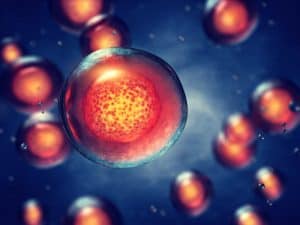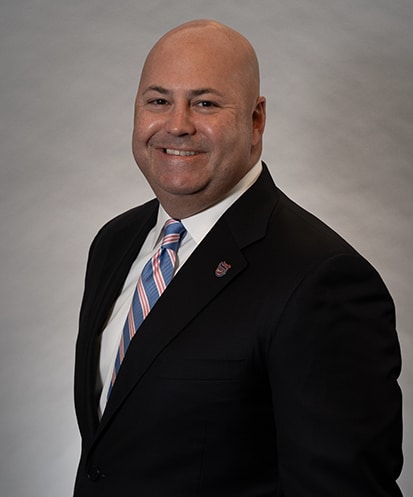Can a Judge’s Ruling on Stem Cell Treatments Really Put a Stop to Them?
 In 2015, a Miami woman with macular degeneration, an incurable disease leading to permanent vision loss, visited a clinic which promised the extraordinary: a treatment designed to slow down, or even stop, the progression of the disease. The treatment would use stem cells from the patient’s own belly fat.
In 2015, a Miami woman with macular degeneration, an incurable disease leading to permanent vision loss, visited a clinic which promised the extraordinary: a treatment designed to slow down, or even stop, the progression of the disease. The treatment would use stem cells from the patient’s own belly fat.
Instead of gaining her vision back, however, the woman suffered greater deterioration. And she was not alone: other patients started coming forward with horror stories of their own – stories about terrible pain, and total blindness, and even falling into comas. Stories by patients who were treated with stem cells for their eyes, lungs, Parkinson’s disease, and diabetes. Stories about people in real pain, with real medical conditions, who were defrauded and maimed by clinics in the U.S. and throughout the world.
The Food & Drug Administration (FDA) acted and filed a lawsuit against one of those clinics: U.S. Stem Cell. The government accused the company of “openly violating the law and endangering patients,” according to the Washington Post.
On June 4, 2019, Judge Ursula Ungaro, who serves in the U.S. District Court for the Southern District of Florida, sided with the FDA, agreeing that the agency “has the authority to regulate a procedure that has become widespread in the burgeoning industry — using patients’ fat to create a stem cell treatment. The judge ruled that the FDA is entitled to an injunction ordering U.S. Stem Cell to halt the procedure.”
This is a landmark decision – one that could be used as precedent for cracking down on experimental treatments and procedures. For many, the lawsuit and the ruling were too long in coming; the FDA should have taken these steps years ago. As attorney Andrew Ittleman told The Scientist, “The lawsuit itself wasn’t surprising. The allegations weren’t surprising. And the judge’s conclusion wasn’t very surprising. If anything, people were wondering why it took so long.”
Why it took years to shut U.S. Stem Cell down
The guidance behind the FDA’s view of stem cells is complicated, but it boils down to this: a human stem cell is not a drug, a food, or a medical device. As such, the FDA has not – until this point – had as much authority to regulate how stem cells are used as you might think. The Washington Post explains:
“The FDA’s rules on the processing and marketing of human cells, including stem cells, date to 2005. The rules allow such cells to be extracted and reinjected into patients without agency approval, but only if they are not more than ‘minimally manipulated’ through processing or the addition of chemicals, such as enzymes. Otherwise, the treatment is considered a drug and requires FDA approval.”
U.S. Stem Cell’s process involves “extracting a patient’s belly fat, mixing it with an enzyme to break down the tissue and spinning the mixture in a centrifuge to isolate mesenchymal stem cells, which can morph into a variety of cell types. Those cells are then injected into patients’ spinal fluid, bloodstream or joints.” Under the FDA’s own rules, what U.S. Stem Cell was doing fell under the guise of “minimal manipulation.” Despite numerous warnings issued by the FDA, stem cell clinics continued to push snake oil procedures, free from the chains of regulatory oversight that other facilities faced.
Until now.
Repacking Pandora’s box
Thanks to Judge Ungaro’s ruling, which allowed for a permanent injunction against U.S. Stem Cell, the FDA might finally be able to hold negligent stem cell clinics accountable for their actions. But that does not mean there won’t be additional problems along the way.
First, there is no way to ensure that the entire industry will comply with the ruling. Other clinics may choose to take their chances, hoping the FDA won’t notice their actions. Some companies have already reworded their offerings, swapping out “stem cells” for “cellular therapy,” in an attempt to keep regulators away.
Second, it only applies to the fat-based procedure. Upon hearing the ruling, U.S. Stem Cell said “It would continue offering stem cell treatments, but instead of fat, rely on patients’ bone marrow and other tissues to harvest the cells it claims can cure conditions as varied as spinal cord injuries and erectile dysfunction.”
Finally, this is only one case. Another lawsuit is currently pending in California, and there is no guarantee that the judge will find for the FDA.
There could be as many as 1,000 stem cell treatment facilities operating within the U.S. Even if they all stop offering fat-based procedures, these companies have already proven that they are willing to hawk fake wares and untested procedures in their pursuit of profits. So while this ruling is a big step in the right direction, there is still a long way to go.
To contact Paulson & Nace, PLLC, please fill out this contact form or by calling 202-463-1999.

Christopher T. Nace works in all practice areas of the firm, including medical malpractice, birth injury, drug and product liability, motor vehicle accidents, wrongful death, and other negligence and personal injury matters.
Read more about Christopher T. Nace.
